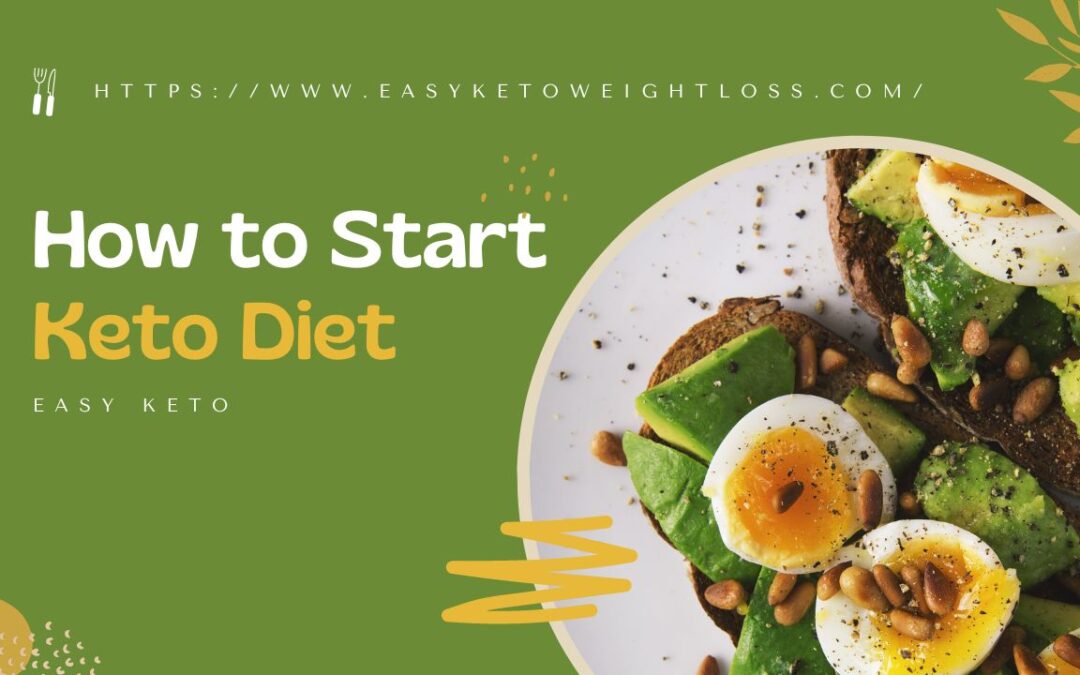Embarking on a weight-loss journey? Considering giving the ketogenic diet a whirl? You’re not alone! This low-carb, high-fat diet has gained popularity for its potential to help weight loss, boost energy levels, and possibly even improve certain health markers. So, whether you’re an office-goer, a busy parent, or simply someone seeking a healthier lifestyle, this guide will serve as your roadmap to starting a ketogenic diet.
Understanding How to Start Keto Diet
The ketogenic diet involves drastically reducing your intake of carbs and increasing fats. This change pushes your body into a metabolic state called ketosis, where it becomes highly efficient at burning fat for energy. Typical keto diet includes plenty of meats, eggs, cheeses, fish, nuts, butter, oils, seeds, and fibrous vegetables.
Step 1: Self-Evaluation and Goal Setting
Like any lifestyle change, starting a ketogenic diet begins with setting clear, realistic goals. Are you aiming to lose weight? Improve health markers, like blood sugar or cholesterol? Or, maybe you’re looking to gain more energy throughout the day. Having clear goals can help motivate you as you start your keto journey.
Step 2: Clear the Cupboards
Set yourself up for success by preparing your kitchen for your diet change. Get rid of foods that are high in carbs such as bread, pasta, sugary snacks, and starchy vegetables. Replace these with keto-friendly alternatives like healthy fats (avocados, nuts, seeds, olive oil), proteins (meat, poultry, fish, eggs), and low-carb vegetables (leafy greens, broccoli, cauliflower).
Step 3: Plan Your Keto Meals
Meal planning can be your best friend on a ketogenic diet. Start by creating a weekly meal plan. Include a mix of your favorite low-carb recipes to keep things exciting. Remember to balance each meal with a good amount of protein, healthy fats, and a small portion of low-carb vegetables.
Step 4: Hydrate and Balance Electrolytes
In the initial stages of the diet, you might experience what’s commonly referred to as the “keto flu.” Symptoms include headaches, fatigue, and irritability, mainly due to dehydration and electrolyte imbalance. Combat this by drinking plenty of water and consuming foods high in electrolytes, like avocados and bone broth.
Step 5: Monitor Your Progress
Keep track of your food intake, energy levels, weight loss, and other health metrics relevant to your goals. There are many apps and tools available that can help you monitor your progress and stay motivated.
Conclusion
Starting a ketogenic diet can be a significant lifestyle change, especially if you’re used to a carb-heavy diet. But with careful preparation, a positive mindset, and a little bit of culinary creativity, it can be an exciting and rewarding journey towards better health. Remember, it’s not just about losing weight, but embracing a healthier lifestyle.
And remember: every body is unique, so what works best for others may not work best for you. Always listen to your body and consult with a healthcare professional if you have any concerns or health conditions.
Now, are you ready to say hello to keto? Your journey to a healthier, more vibrant you starts here!

